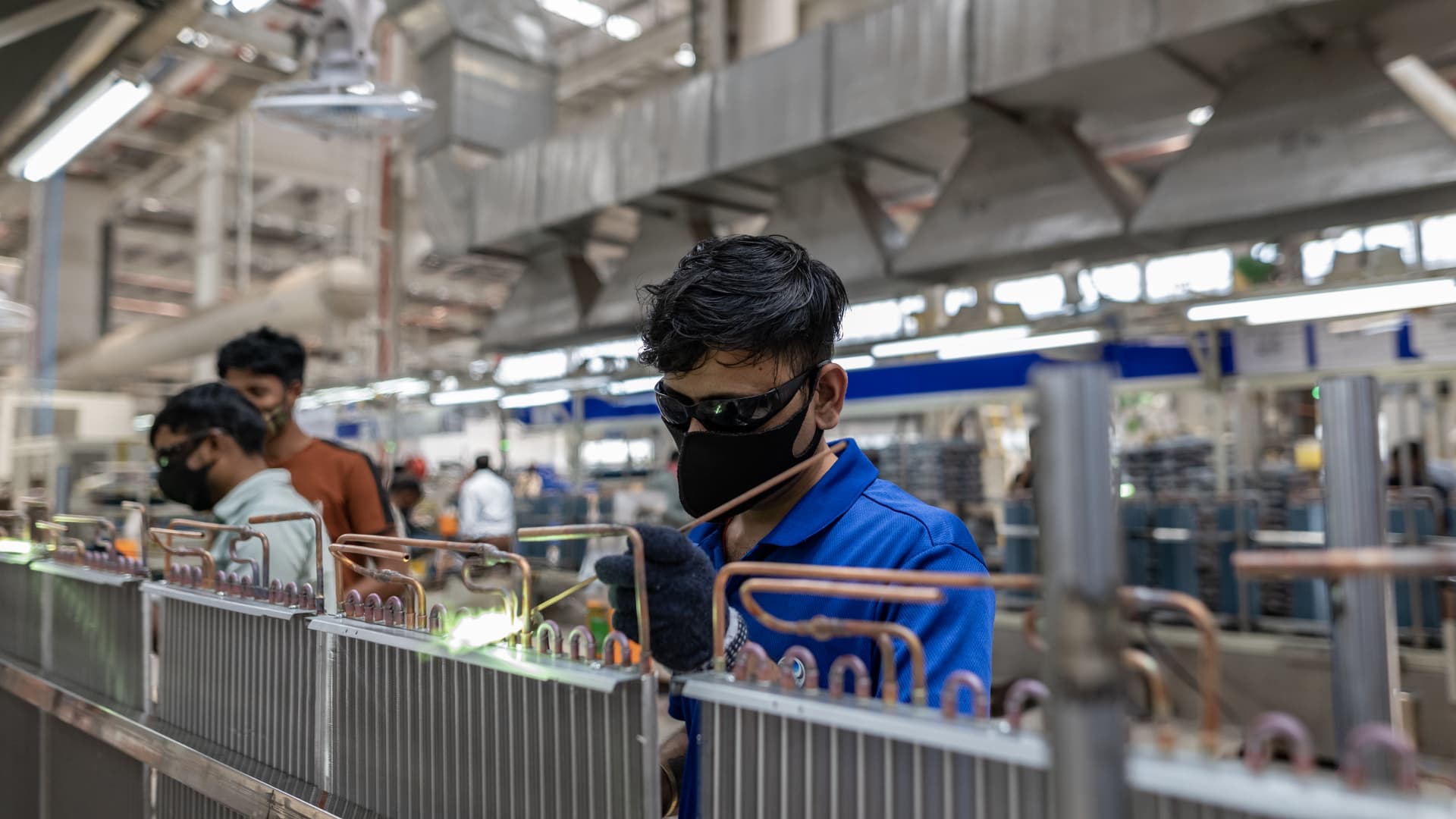A worker welds at the air conditioner factory of Haier Appliances India Ltd., in Greater Noida, India, on May 8, 2023.
Bloomberg | Bloomberg | Getty Images
India may be the most populous country in the world, but its labor force continues to lag behind China’s, according to Oxford Economics.
Even though India has the world’s largest population, its labor force participation is only at 51%, trailing China by 25 percentage points.
“Although the rate will increase over time, our current projections suggest India’s labor force will remain smaller than China’s until the late 2040s,” Oxford said in a report last week.
According to the economic advisory firm, India will have to achieve a participation rate of over 70% in order to achieve the same labor force size as China by 2030.
Although a larger proportion of India’s population is of working age, those between the ages of 15 and 64 only make up 51% of the country’s labor force, compared to 76% in China.
India’s population is now estimated to be at 1.4 billion and is expected to peak slightly below 1.7 billion in the mid-2060s. China’s population would have dipped to 1.1 billion by then, the report said.
Female employment in India continues to remain significantly lower than China.
While China’s female labor force stands at 71%, women make up only 25% of India’s workforce. This is even lower than poorer economies such as Pakistan (26%) and Bangladesh (40%), according to the Oxford Economics report.
Developing nations in the region that have a smaller economy also have a higher number of female workers in their labor force. More than 50% of women in Indonesia, Malaysia, Laos, Thailand and Vietnam are working, that data showed.
Education and health continues to drag behind
It’s not just India’s low labor rate that poses a problem, the productivity of its workforce is another challenge.
Oxford Economics attributed this to the country’s lack of proper education and health-care standards.
“India’s average human capital levels, which define the productivity of its labor force and are determined by a variety of education and health outcomes, also currently rank behind China and most of its regional peers,” the report said.
Data from the World Economic Forum showed that India’s literacy rate in 2018 stood at 74%, lagging behind China by 97%.
Although that’s not an alarming number, the country’s education quality remains weak.
Learning disruptions during the pandemic delayed reading and calculation proficiency of many students in rural India, according to a study from non-governmental organization, Pratham.
A teacher teaching his class how to write English letters in West Bengal, India on Sept. 15, 2023. 15/09/2023. (Photo by Soumyabrata Roy/NurPhoto via Getty Images)
Nurphoto | Nurphoto | Getty Images
As for health standards, India’s life expectancy at birth stood at 70.9 years in 2019, while it was 77.7 in China, Oxford’s report showed. There were also only 7.3 doctors per 10,000 people in India, compared to 23.9 doctors per 10,000 people in China, it highlighted.
Raising funding is paramount to improving the quality of education and health care in the country, Oxford pointed out.
Education spending currently amounts to a mere 2.9% of India’s GDP, falling behind the government’s 6% target in 2020. And although government expenditure on health care has increased to 2.1% of GDP this year, it still remains lower than many other countries.





















Discussion about this post